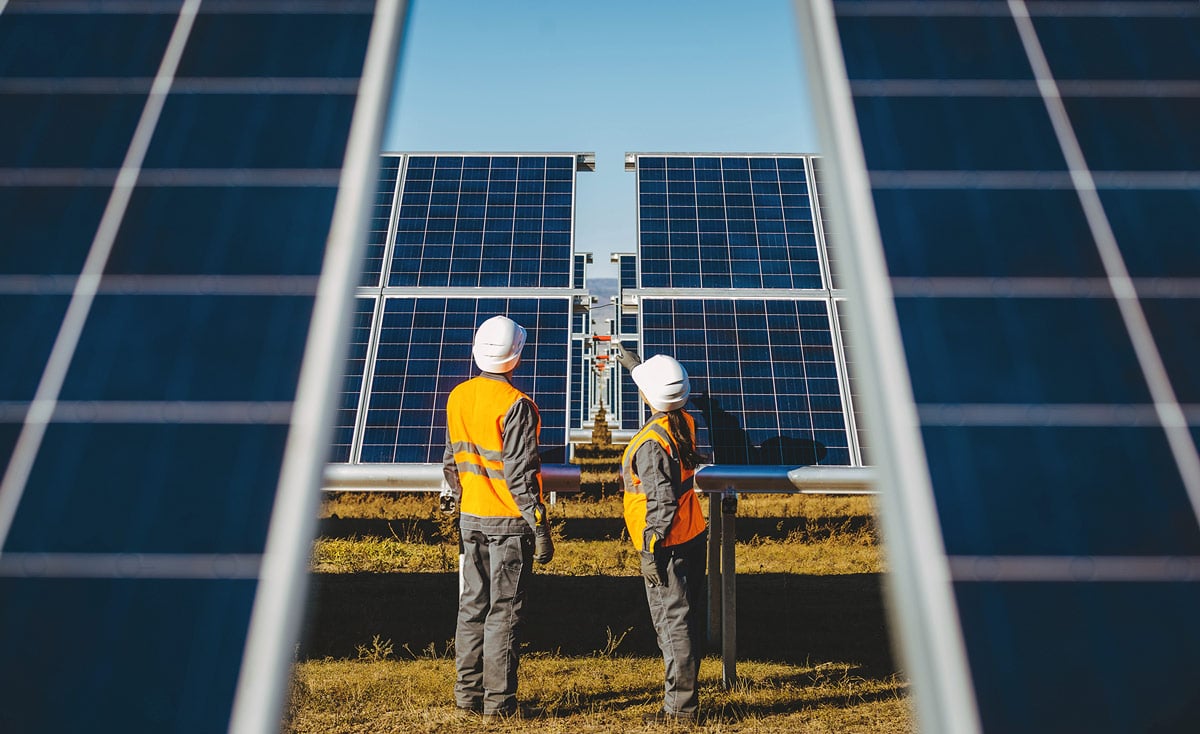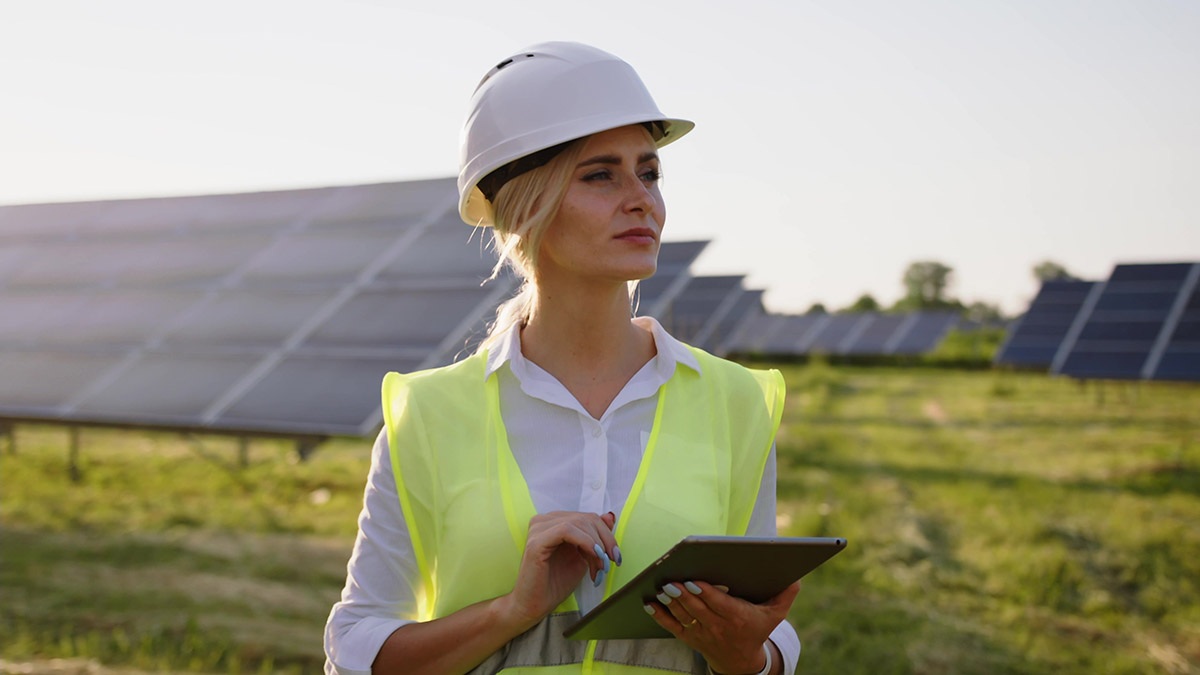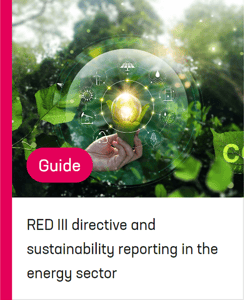Everything you need to know about the European Renewable Energy Directive (RED III)
The RED III Directive entered into force on 20 November 2023, and the regulations of the Directive must be implemented in companies in the member states by 21 May 2025.
The Renewable Energy Directive (RED) requires each EU member state to achieve, among other things, a renewable energy target of at least 42.5% by 2030.
This page provides information on how the new Directive affects energy companies, the opportunities and challenges it brings, and how to comply with the Directive.

Table of contents
- What is the EU Renewable Energy Directive (RED III)?
- When does RED III have to be implemented in EU member states?
- What is the difference between RED I, RED II, and RED III?
- How does RED III contribute to sustainable development?
- How does RED III affect the energy industry?
- Legal reporting requirements for energy companies under the RED III Directive
- What are the challenges and obstacles to meeting the requirements of the Renewable Energy Directive?
- How can you meet the reporting requirements of the Renewable Energy Directive in the energy sector?

The European Renewable Energy Directive (RED) is an important legal framework for promoting renewable energy in the EU. The directive also has a broad impact on the energy sector and related industries.
The latest directive, RED III, requires member states to increase the share of renewable energy in total energy consumption and promote the use of renewable energy in various sectors, such as transport, heating, and electricity production. It aims to reduce dependence on fossil fuels and cut carbon emissions to combat climate change.
An important part of RED III is the setting of national renewable energy targets. Each member state must set its own specific targets based on its energy potential and socio-economic circumstances. These targets are binding, and member states must report regularly to the European Commission on their progress.

The key objective of the new RED III Directive is to increase the overall target of renewable energy throughout the EU from the current 32% to 42.5% by 2030.
EU member states must support the accelerated development of renewable energy projects through coordinated mapping of the deployment of renewable energy and related infrastructure on their territory, in coordination with local and regional authorities.
In addition to setting up new renewable energy production plants, upgrading existing renewable energy power plants has a significant effect on meeting renewable energy targets.
To ensure better environmental performance of the EU sustainability criteria and greenhouse gas reduction criteria for solid biomass fuels in installations for heating, electricity, and cooling, the minimum threshold for the application of these criteria is reduced from the current 20 MW to 7.5 MW.
RED I, the first version of the Renewable Energy Directive, came into force in 2009 and provided a general framework for the promotion of renewable energy in the EU. The sustainability criteria of the RED I Directive only applied to liquid biofuels. This created the framework conditions for reducing dependence on fossil fuels and promoting sustainable development.
RED II, the second version of the directive, was adopted in 2018. It included more requirements for a larger number of companies compared to RED I. One of the most important changes was the increase in the share of renewable energy in the transport and energy sectors.
The addition to the RED II Directive was a response to the need to reduce emissions from transport and promote the use of renewable fuels such as biodiesel and biogas. In the energy sector, attention was paid to the origin of materials used in energy production and the environmental impact of production and transport.
RED III, the latest version of the directive, was introduced in fall 2023. It is based on RED II. This directive includes stricter targets for member states and additional measures to promote renewable energy in various sectors, such as bioenergy, heating, cooling, construction, transport, and industry. It also highlights the importance of promoting energy efficiency and advanced biofuel use.
"Member states must introduce the regulations under the RED III Directive by 21 May 2025."
RED III plays an important role in promoting sustainable development in the EU.
Sustainable development is not only about protecting the environment, but also about promoting economic growth and social well-being. By investing in renewables, EU countries can create new green jobs and boost economic growth in areas such as solar, wind, and bioenergy.
“The RED Directive obliges operators to report on the sustainability of the biofuels they use, for example.”
RED III also emphasizes the importance of promoting the sustainable production and use of biomass and biofuels. This means that the use of biomass must be sustainable and not contribute to deforestation or threaten biodiversity. The RED III Directive obliges operators to report on the sustainability of the biomass fuels used, for example.
The monitoring of the cascading use of wood tightens, which results in no direct subsidies for the energy use of wood suitable for industrial use. This aims at a more resource-efficient use of materials, with forest biomass being used primarily for products and materials rather than energy use, and to minimize undue distortions in the raw materials market and adverse impacts on biodiversity.
RED III has a significant impact on the EU energy sector. It increases the use of renewable energy, and reduces dependence on fossil fuels, reducing carbon emissions.
Examples of impacts of RED III on the energy sector:
- Increasing renewable energy targets: Companies need to increase the share of renewable energy in total energy consumption. This could mean further investment in solar, wind and bio-energy, as well as the use of advanced biofuels and renewable electricity production.
- Promoting energy efficiency: RED III also highlights the importance of promoting energy efficiency. Companies must take measures to reduce energy consumption, and promote the use of energy-efficient technologies.
- Sustainability reporting and sustainability demonstration: RED III also obliges smaller installations in the energy sector to perform sustainability reporting. For plants using biomass fuels, the overall thermal threshold for the application of the sustainability criteria is reduced from 20 MW to 7.5 MW. The demonstration of biomass sustainability is therefore extended to more installations.
The detailed reporting and monitoring requirements of the RED III Directive relate to the obligation for companies operating in the EU to monitor and report on their share of renewable energy and the measures they are taking to meet the targets of the Directive.
The requirements are detailed and are designed to ensure that member states and their companies comply with the set targets and commitments. Here are some key elements of these requirements:
- Close monitoring of the share of renewable energy:
- Companies need to closely monitor the share of renewable energy of their total energy consumption.
- Close monitoring covers sectors such as electricity production, heating, cooling, and transport.
- The data must be reliable, comparable, and available on a regular basis.
- Reviewing the use of renewable energy in different sectors:
- Companies must report separately on their use of renewable energy in different sectors, such as industry, households, and transport.
- Particular attention should be paid to promoting sustainable transport and increasing the use of biofuels.
- Reporting on measures and policies:
- Companies must provide detailed clarification of the measures they have taken to increase the share of renewable energy.
- This includes information on the incentives, investments, and strategies used.
- Environmental impact assessment:
- Companies must report on the environmental impact assessment of renewable energy production, including, for example, changes in land use for biofuel production.
- The environmental impacts must be in line with the principles of sustainable development.
- Reviewing the sustainability of biofuels:
- Companies must provide information on the measures taken to ensure the sustainability of biofuels.
- This includes ensuring that biofuel production follows sustainable practices, and does not have adverse environmental impacts.
- Reporting on the achievement of renewable energy share targets:
- Companies must demonstrate how they intend to meet the renewable energy share targets and what measures they will take, if any.
- Companies must demonstrate how they intend to meet the renewable energy share targets and what measures they will take, if any.
- Regular reporting and monitoring:
- Companies are required to report regularly to the Commission: typically, the reporting must be performed annually, but the period can vary and be more frequent in certain situations.
- The Commission monitors progress, and can make recommendations, or take other measures, if necessary, if member state companies do not meet the targets.
- Cooperation and exchange of information between member states:
- The member states are expected to work closely together and share best practices and knowledge to promote the use of renewable energy.
The Commission regularly monitors and evaluates companies’ actions on the basis of the reported information. If a company fails to meet the set targets or other requirements of the Directive, the Commission can make recommendations and, if necessary, take legal action.
Also read why energy analysis is an indispensable tool for monitoring CO2 emissions, transport distances, and the origin of fuels, and thus for fulfilling the requirements of the RED III directive.
Meeting the requirements of the Renewable Energy Directive (RED III) can be a challenge for companies. Here are some of the most common challenges and obstacles:
- Financial resources: The implementation of RED III requires significant financial resources and investment to increase the use of renewable energy. It can be challenging for companies to find sufficient resources to achieve their goals.
- Technological gap: There may be a technological gap in companies in the renewable energy sector, which can make it difficult to achieve the set targets. Technological innovation and training may be needed to facilitate the implementation of RED III.
- Infrastructural challenges: The increased use of renewable energy can require improvements in existing infrastructure, and the development of new plants. This can be challenging, especially for companies with limited resources.
- Political support and cooperation: Meeting RED III requirements entails political support and cooperation between different stakeholders, including government, the energy sector, and society. The challenge is that all parties are committed and working towards the same goal.
Overcoming these challenges and obstacles requires a holistic approach and cooperation between different stakeholders.

Once by Pinja is designed to manage the ordering and supply chains of bioenergy plants, and has been developed in partnership with energy operators over 30 years. Once is a SaaS (Software as a Service) system that enables efficient supply chain and operational data management, as well as real-time visibility of energy plant operations in a single system.
The data required by the RED III Directive (Renewable Energy Directive) is collected in the Once system and compiled for reporting of the different stages of the supply chain. This ensures that the information required by the Directive can be verified in detail and submitted to national sustainability systems for EU reporting.
The demonstration of sustainability in Once is based on fuel contract data, load data, and additional information on individual loads.
The fuel-specific information set out in the contract data, such as, for example, the origin, has an impact on the demonstration of the sustainability of the fuel load. Contract information can also be accompanied by documents describing the supplier’s approach to demonstrating sustainability.
In reporting terms, sustainability can be, for example, additional information directly related to contract items in a situation where the supplier’s contract and supply chain are certified. Once can perform raw material separation and material balance management and related reporting.
In particular, the calculation of delivery batches and the emission stream (CO2) is a key part of the reporting. Missing sustainability data alerts the user of the system to fill in the missing data, thus ensuring its accuracy.
Want to learn more about how software solutions can help you meet the reporting requirements of the RED III Directive?
Use the form below to book a free remote meeting with one of our experts. Booking a meeting does not commit you to anything.
In the remote meeting we can, for example:
- Deepen your understanding of the requirements of RED III in your industry
- Map how RED III reporting requirements are currently met in your company
- Discuss how reporting could be made easier and more automated


